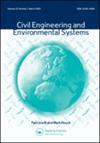Factors affecting environmental sustainability of urban renewal projects
IF 1.1
3区 工程技术
Q3 ENGINEERING, CIVIL
引用次数: 16
Abstract
ABSTRACT Urban renewal programmes offer an opportunity to improve the environmental sustainability of urban areas by creating well-designed and well-constructed built environments. In this study, the contributions of built environment design elements to environmental sustainability were evaluated through a questionnaire survey with the participation of 323 people who previously worked in urban renewal projects. Implementing factor analysis, interrelated elements have been gathered under five factors: ‘transportation and accessibility’, ‘conservation of natural resources’, ‘built environment quality’, ‘supporting social life’ and ‘high-density usage’. To identify the importance weights of these factors, analytic hierarchy process (AHP) analysis was carried out with 40 academics and practitioners. Based on the results, ‘conservation of natural resources’ was found as the most important factor affecting the environmental sustainability of urban renewal projects. It is expected that the results of this study shall guide a wide range of urban renewal stakeholders, extending from designers to citizens, along the path of creating environmentally sustainable cities.影响市区重建项目环境可持续性的因素
城市更新计划通过创造精心设计和建造的建筑环境,为改善城市地区的环境可持续性提供了机会。本研究以问卷调查的方式,评估建筑环境设计要素对环境永续性的贡献,调查对象为323位曾参与都市更新专案的人士。通过因素分析,将相关因素归纳为五个因素:“交通和可达性”、“自然资源保护”、“建筑环境质量”、“支持社会生活”和“高密度使用”。为了确定这些因素的重要性权重,采用层次分析法(AHP)对40名学者和从业人员进行了分析。结果表明,“保护自然资源”是影响城市更新项目环境可持续性的最重要因素。预计本研究的结果将指导广泛的城市更新利益相关者,从设计师到市民,沿着创建环境可持续城市的道路。
本文章由计算机程序翻译,如有差异,请以英文原文为准。
求助全文
约1分钟内获得全文
求助全文
来源期刊

Civil Engineering and Environmental Systems
工程技术-工程:土木
CiteScore
3.30
自引率
16.70%
发文量
10
审稿时长
>12 weeks
期刊介绍:
Civil Engineering and Environmental Systems is devoted to the advancement of systems thinking and systems techniques throughout systems engineering, environmental engineering decision-making, and engineering management. We do this by publishing the practical applications and developments of "hard" and "soft" systems techniques and thinking.
Submissions that allow for better analysis of civil engineering and environmental systems might look at:
-Civil Engineering optimization
-Risk assessment in engineering
-Civil engineering decision analysis
-System identification in engineering
-Civil engineering numerical simulation
-Uncertainty modelling in engineering
-Qualitative modelling of complex engineering systems
 求助内容:
求助内容: 应助结果提醒方式:
应助结果提醒方式:


